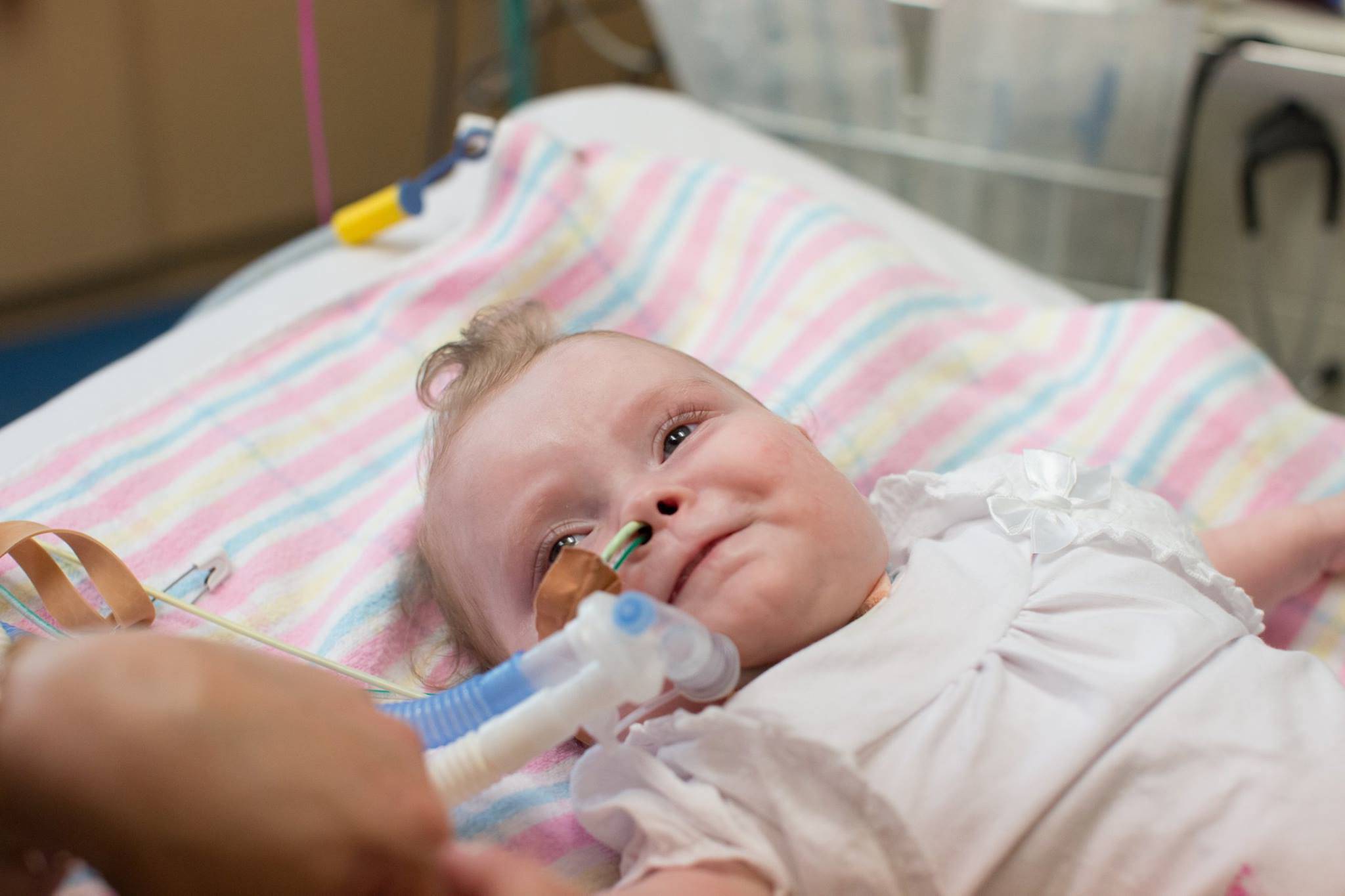
What is Bronchopulmonary Dysplasia (BPD)? Bronchopulmonary Dysplasia, often called BPD, is a chronic lung disease that mainly affects premature infants who need oxygen therapy and mechanical ventilation. First described in 1967, BPD remains a significant challenge in neonatal care. Premature birth, low birth weight, and prolonged oxygen use are key risk factors. This condition damages the alveoli and blood vessels in the lungs, leading to inflammation and fibrosis. Infants with BPD often struggle with rapid, labored breathing and may require long-term respiratory support. Understanding BPD's causes, symptoms, and treatments is crucial for improving outcomes for these vulnerable infants.
Understanding Bronchopulmonary Dysplasia
Bronchopulmonary Dysplasia (BPD) is a chronic lung disease that affects newborns, especially those born prematurely. It involves damage to the lungs and can lead to long-term respiratory issues. Here are some essential facts to help you understand BPD better.
-
Definition and History
Bronchopulmonary dysplasia was first described by Northway et al. in 1967 as a chronic form of lung injury caused by barotrauma and oxygen injury in preterm infants requiring mechanical ventilation. -
Epidemiology
BPD affects approximately 10,000 to 15,000 newborns in the United States each year, with the majority being premature infants born more than 10 weeks early. -
Risk Factors
The primary risk factor for BPD is prematurity, with infants born at less than 32 weeks of gestation being at the highest risk. Other risk factors include low birth weight, need for mechanical ventilation, and prolonged use of oxygen therapy.
Causes and Pathophysiology
Understanding what causes BPD and how it affects the lungs can help in managing and preventing the condition.
-
Pathophysiology
BPD is characterized by damage to the alveoli and the surrounding blood vessels, leading to inflammation and fibrosis. The condition can also affect the central and small airways, causing structural remodeling and impaired lung function. -
Stages of BPD
The development of BPD can be divided into several stages, including acute injury, chronic lung injury, and repair and remodeling. The acute stage occurs within days to weeks after birth, while the chronic stage can persist for months to years. -
Types of BPD
There are two main types of BPD: "old" BPD and "new" BPD. The "old" BPD is characterized by severe airway damage and alveolar septal fibrosis, whereas the "new" BPD shows less airway damage but more disruption in lung development. -
Causes of BPD
BPD is primarily caused by the combination of mechanical ventilation and high concentrations of oxygen, which can lead to overstretching of the alveoli and subsequent inflammation. Other factors include prenatal infections, maternal smoking, and placental abnormalities.
Risk Factors and Clinical Presentation
Knowing the risk factors and how BPD presents itself can aid in early diagnosis and treatment.
-
Prenatal Risk Factors
Prenatal risk factors for BPD include lack of antenatal steroids, maternal smoking, pregnancy-induced hypertension (preeclampsia), hypoxia, maternal infection (chorioamnionitis), and genetic susceptibility. -
Postnatal Risk Factors
Postnatal risk factors include lung immaturity, poor nutrition, need for mechanical ventilation, oxygen injury, and infection/sepsis. -
Clinical Presentation
Infants with BPD often present with rapid, labored breathing and bluish discoloration of the skin (cyanosis) due to low levels of oxygen in the blood. They may also experience feeding difficulties and delayed development.
Diagnosis and Imaging
Accurate diagnosis and monitoring are crucial for managing BPD effectively.
-
Diagnosis
The diagnosis of BPD is primarily based on clinical criteria, including the need for supplemental oxygen at 28 days of life and/or positive pressure ventilation for at least 28 days. -
Diagnostic Criteria
The National Institutes of Health (NIH) consensus definition of BPD includes the need for supplemental oxygen at 28 days of life and/or positive pressure ventilation for at least 28 days. However, there is ongoing controversy about the optimal time point and method for determining whether BPD exists. -
Imaging Studies
Imaging studies such as chest radiographs, computed tomography (CT), and magnetic resonance imaging (MRI) can help in diagnosing and monitoring the progression of BPD. Serial high-resolution CT scans can illustrate time-related changes in lung architecture.
Lung Pathophysiology and Complications
BPD affects various parts of the lungs and can lead to serious complications.
-
Lung Pathophysiology
BPD affects the central airways, causing tracheomalacia, subglottic stenosis, granulomas, bronchomalacia, and bronchial stenosis. It also affects the small airways, leading to structural remodeling, mucus gland hyperplasia, epithelial injury, smooth muscle cell proliferation, bronchoconstriction, and hyperreactivity. -
Distal Airspace and Vasculature
BPD causes decreased alveolarization and vascular growth, abnormal vascular remodeling, tone, and reactivity, and impaired lymphatic function and structure. -
Chronic Oxygen Supplementation
Infants with BPD often require chronic oxygen supplementation to maintain adequate oxygen levels in the blood. This can lead to increased pressure inside the blood vessels in the lungs and between the heart and lungs, potentially causing pulmonary hypertension. -
Pulmonary Hypertension
Pulmonary hypertension is a common complication of BPD, which can lead to heart failure in severe cases. Heart failure can result from the increased workload on the right side of the heart due to high blood pressure in the pulmonary arteries. -
Heart Failure
Heart failure is a serious complication of BPD, particularly in infants with severe pulmonary hypertension. It can lead to significant morbidity and mortality if not managed appropriately.
Treatment and Management
Effective treatment and management strategies are essential for improving outcomes in infants with BPD.
-
Nutritional Support
Proper nutritional support is crucial for infants with BPD. Malnutrition can exacerbate lung injury and delay recovery. Breast milk has been shown to have beneficial effects on respiratory outcomes in infants with BPD. -
Breast Milk Benefits
Breast milk contains essential nutrients and antibodies that can help reduce the severity of BPD. It also promotes better lung function and reduces the need for respiratory support. -
Non-Invasive Ventilation
Non-invasive ventilation techniques such as continuous positive airway pressure (CPAP) and bi-level positive airway pressure (BiPAP) have improved outcomes in preterm infants with BPD by reducing the need for invasive mechanical ventilation. -
Surfactant Administration
Early treatment with surfactant has reduced the need for high levels of respiratory support after birth. Surfactant helps to decrease surface tension in the alveoli, making it easier for the lungs to expand and contract. -
Antenatal Steroids
Antenatal steroid treatment before preterm birth has been shown to reduce the incidence of BPD by promoting fetal lung maturation. These steroids help to increase surfactant production and improve lung function. -
Mechanical Ventilation
Mechanical ventilation is a critical component of neonatal care but can also contribute to lung injury. Newer modes of ventilation, such as high-frequency oscillatory ventilation (HFOV), are being developed to minimize lung damage. -
Oxygen Toxicity
High concentrations of oxygen can cause oxidative stress and damage to the developing lungs. Strategies to minimize oxygen exposure, such as using lower concentrations of oxygen, are being explored to reduce the risk of BPD. -
Infection Prevention
Infections such as chorioamnionitis and sepsis can increase the risk of BPD. Preventive measures such as antibiotic prophylaxis and strict infection control protocols are essential in reducing the incidence of BPD.
Genetic and Environmental Factors
Both genetic and environmental factors play a role in the development of BPD.
-
Genetic Susceptibility
Genetic factors can influence an infant's susceptibility to BPD. Research into genetic predispositions may help identify high-risk infants and develop targeted interventions. -
Environmental Factors
Environmental factors such as maternal smoking and exposure to pollutants can increase the risk of BPD. Public health campaigns aimed at reducing these exposures are crucial in preventing BPD. -
Prenatal Care
Prenatal care is essential in identifying and managing risk factors for BPD. Regular antenatal check-ups can help detect complications early, allowing for timely interventions to reduce the risk of BPD. -
Postnatal Care
Postnatal care is critical in managing infants with BPD. Close monitoring of respiratory status, nutritional support, and appropriate use of respiratory support devices are essential in optimizing outcomes.
Long-Term Outcomes and Research
BPD can have long-term effects, and ongoing research aims to improve outcomes for affected infants.
-
Chronic Lung Disease
BPD can lead to chronic lung disease, which may persist into adolescence and adulthood. Affected individuals may experience persistent respiratory symptoms and reduced lung function. -
Long-Term Outcomes
Long-term outcomes for infants with BPD vary widely. Some infants fully recover, while others may experience sustained abnormalities in lung function and structure. Regular follow-up care is necessary to monitor long-term respiratory health. -
Rehabilitation Programs
Rehabilitation programs aimed at improving lung function and reducing respiratory symptoms are essential for infants with BPD. These programs may include physical therapy, occupational therapy, and respiratory therapy. -
Supportive Care
Supportive care is crucial for infants with BPD. This includes emotional support for families, nutritional counseling, and ongoing medical care to manage chronic respiratory symptoms. -
Research Initiatives
Research initiatives aimed at understanding the pathophysiology of BPD are ongoing. Studies are exploring new treatments, including glucocorticoid-receptor agonists, miR-203a-3p knockdown, and vascular endothelial growth factor A up-regulation. -
NIH Studies
The NIH's Prematurity Respiratory Outcomes Program (PROP) is tackling both the semantics and biology behind BPD. This initiative aims to improve our understanding of BPD and develop better interventions. -
Clinical Trials
Clinical trials are being conducted to evaluate the efficacy of new treatments for BPD. These trials aim to improve short-term and long-term outcomes for infants with BPD. -
Genetic Studies
Genetic studies are being conducted to identify genetic predispositions to BPD. This knowledge can help in developing targeted interventions and improving outcomes for high-risk infants. -
Environmental Studies
Environmental studies are being conducted to understand the impact of environmental factors on the development of BPD. This knowledge can help in developing public health strategies to prevent BPD. -
Future Directions
Future directions in the management of BPD include the development of personalized medicine approaches, the use of advanced imaging techniques, and the exploration of novel therapeutic agents. Ongoing research aims to improve our understanding of BPD and develop better interventions to enhance short-term and long-term outcomes for affected infants.
Understanding Bronchopulmonary Dysplasia
Bronchopulmonary dysplasia (BPD) is a tough nut to crack, especially for premature infants. It’s a chronic lung disease that stems from a mix of factors like mechanical ventilation, oxygen therapy, and infections. Premature birth is the biggest risk factor, but prenatal and postnatal influences also play a role. Diagnosing BPD involves looking at the need for supplemental oxygen and mechanical ventilation. Treatment focuses on minimizing lung injury, providing nutritional support, and managing complications like pulmonary hypertension. Long-term outcomes vary, with some infants recovering fully while others face ongoing respiratory issues. Advances in neonatal care, non-invasive ventilation, and research into genetic and environmental factors offer hope for better management and outcomes. Understanding BPD’s complexities helps in offering the best care and improving the quality of life for affected infants.
Was this page helpful?
Our commitment to delivering trustworthy and engaging content is at the heart of what we do. Each fact on our site is contributed by real users like you, bringing a wealth of diverse insights and information. To ensure the highest standards of accuracy and reliability, our dedicated editors meticulously review each submission. This process guarantees that the facts we share are not only fascinating but also credible. Trust in our commitment to quality and authenticity as you explore and learn with us.


